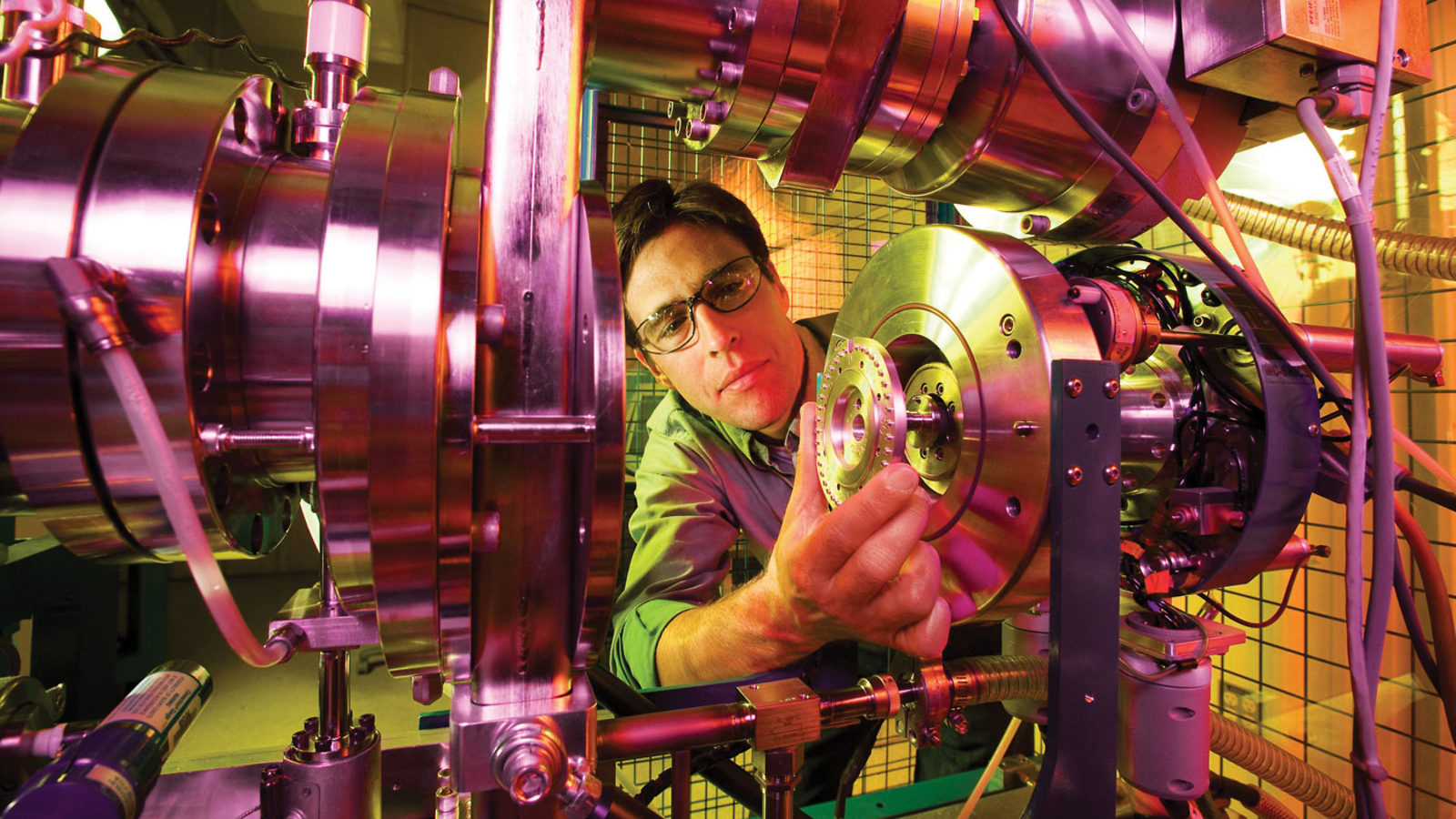Step into the Center for Accelerator Mass Spectrometry at Lawrence Livermore National Laboratory on any given day, and you may see researchers tracking the dynamics of the Earth’s carbon cycle, searching for signatures of nuclear fuel reprocessing or determining the age of remains from the Chicago Police Department’s cold case files.
These vastly different projects have one thing in common: They all use accelerators to measure levels of carbon-14 and other isotopes.
CAMS is one of several dozen labs worldwide that conduct accelerator mass spectrometry, or AMS. The technique is less time-consuming and requires a much smaller sample size than traditional carbon dating.
In AMS, researchers direct a beam of cesium ions at a sample. This causes the sample to eject atoms, which are then filtered by magnetic and electric fields and sent into a detector that counts them.
The ratio of unstable carbon-14 to stable carbon-12 atoms reveals the age of the sample—be it an ancient manuscript or a Neanderthal skull. Likewise, other isotopes like beryllium-10 and aluminum-26 divulge how long a sample has been subjected to the constant barrage of cosmic rays that comes with sitting on the surface of Earth—telling geologists, for example, how quickly a region of rock is eroding or how long ago an earthquake brought sediment to the surface. Carbon-14 also reveals whether a sample of ivory was removed from an animal before or after the 1989 ban on ivory sales.
“Just the fact that AMS requires only a tiny sample has opened up whole new fields,” says John Southon, co-founder of the AMS facility at the University of California, Irvine. “AMS requires one ten-thousandth or less of the material than other techniques. There are so many applications where we just didn’t have large enough samples before AMS.”
For CAMS Director Graham Bench, one of the most exciting future applications is personalized medicine: AMS may soon help treat patients with cancer.
Chemotherapy, one of the most common cancer treatments, is not effective for everyone; as many as 40 percent of patients don’t respond to treatment.
Scientists are beginning to study the possibility of giving patients very small doses of chemotherapy drugs laced with a radioactive tracer. These micro-doses are too small to shrink a tumor. But they are large enough that, when a researcher views the patient’s blood a few hours later using AMS, she can determine whether the drug has successfully bound to DNA, as it is supposed to, or if something in the patient’s biological makeup stopped this binding from taking place. Clinical trials suggest that in people whose DNA shows large amounts of binding, chemotherapy may turn out to be a good option. Other patients may be better off undergoing other treatments.
“When most people think about carbon dating, they think about dating objects that are thousands of years old,” says Bench. “But we can now do so much more.”







